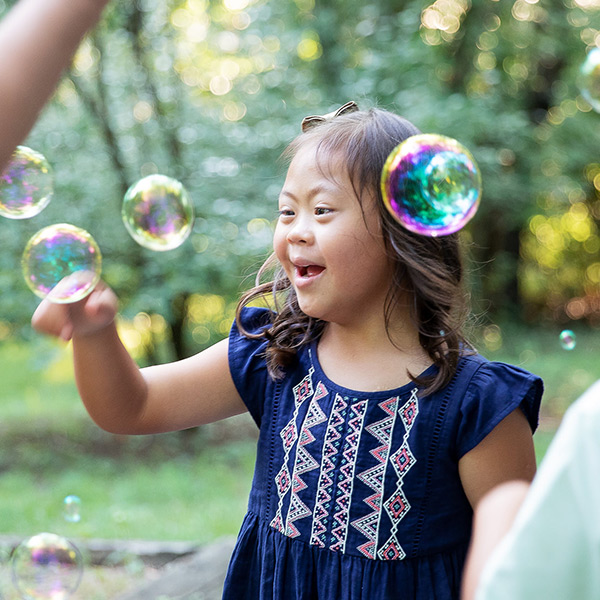Understanding Secure Attachment

An Introduction to Attachment Theory
At Show Hope, you will often hear us talk about attachment, particularly in regard to our Pre+Post Adoption Support work. As we recently outlined in a blog post, attachment theory suggests that each one of us has an attachment style that formed when we were young. First developed by psychologists John Bowlby and Mary Ainsworth in the 1930s, this notion says that your attachment style, formed during your early relationship with your caregivers and how they responded to your needs, play an integral role in how you relate to those around you as an adult. There are four primary attachment styles: Anxious (also referred to as Preoccupied), Avoidant (also referred to as Dismissive), Disorganized (also referred to as Fearful-Avoidant), and Secure. On their website, the Cleveland Clinic defines secure attachment as “the ability to build healthy, fulfilling, and long-lasting relationships.” For parents and caregivers, developing or building secure attachment within our children and teens is a goal we hold dear.
Secure Attachment Style
According to The Attachment Project, “As infants/children, we are dependent on our parents or primary caregivers. We need them for survival, so we have no other option than to attach to them and trust that they will take good care of us. In most cases, parents will do their best to satisfy all of our needs and provide us with a warm and nurturing environment. If they are attuned and responsive to our needs, we are able to build a secure and stable relationship with them, and consequently, a secure attachment style.”
Signs of Secure Attachment
Many experts agree that common signs of secure attachment in children are that they feel safe, valued, and comforted by their primary caregivers. For instance, with babies who are securely attached, they typically cry when their parents or caregivers leave, yet they will find comfort when their parents or caregivers return. As outlined by the Cleveland Clinic, secure attachment in adults looks like feeling safe and confident in relationships. Some hallmarks of secure attachment in adulthood include:
- Trusting others easily
- Communicating effectively
- Regulating your emotions
- Feeling comfortable when spending time alone
- Connecting with others easily
- Managing conflict in healthy ways
- Making yourself emotionally available to others
TBRI® and Attachment
Parenting is weighty enough, and as you begin thinking about attachment styles in your children, teens, or even yourself, you may quickly spiral with doubts, questions, fears, and anxiety. The good news, there is still hope and help. With insight and practical tools, like Trust-Based Relational Intervention® (or TBRI®), you can begin building more healthy, secure, and trusting relationships with your children and teens, only further laying the groundwork for a secure attachment style in their futures.
The following are just a few tips and practices to begin implementing today with your children that will build their view of themselves as well as their trust in your relationship together.
- Ensure that your child or teen feels safe. As The Attachment Project lays it out, “Attuned [parents] are fiercely protective but not overwhelming, intrusive, or ignoring. They give their children space and freedom to explore the world, but stay close enough, so that the child has a felt sense of safety.”
- Ensure that your child or teen feels seen and heard. In our fast-paced, busy culture, it is easy to brush aside questions, feelings, and emotions. For instance, instead of telling a child to “tough it out” over a bruised knee, lean in and validate the pain and fear that comes with a fall on the playground. For guys, it is OK to give your son a hug over a skinned knee—it’s often very needed. With teens, spend time in conversation, asking questions or answering questions—or simply let them know that you are there for them, rather than “explaining away” their problems.
- Ensure that your child or teen feels valued. Offer praise and recognition for hard work. For instance, it could be as simple as a drawing done at the dining room table or passing a test that was challenging. And show affection and appreciation through healthy touch, like a fist bump, high five, and hug. Or simply make time to play with your child. It could be toys in their bedroom or outside shooting hoops. Whatever it may, let your child take the lead and you follow.
Additional Resources
Parenting is hard—no questions asked. And while our journeys can be exhausting and challenging, there is much beauty and hope to experience as well. Children and teens need to know they are safe, secure, valued, and loved, yet key developmental and relational needs are often overlooked with traditional parenting models. If you are in need of further tools and resources, whether it be developing secure attachment within your children and teens or more in-depth training and equipping, we encourage you to learn more about our Pre+Post Adoption Support work, including our new online platform, Hope for the Journey.





